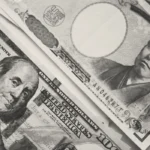The yen extended yesterdays gains against the US dollar after a gauge of Chinese economic surprises declined to the weakest level in nine months, fueling concern over a slump in the Chinese economy that boosted demand for the Japanese currency as a safe-haven.
USD/JPY touched a session low at 102.81 at 07:00 GMT, after which the pair consolidated at 102.87, losing 0.14% for the day. Support was likely to be received at March 11th low, 102.79, while resistance was to be met at March 11th high, 103.42.
Demand for haven assets, including the yen was bolstered by the escalating tension over Ukraines Crimean peninsula and ahead of data tomorrow forecast to reveal Chinese industrial production slowed its pace last month.
The parliament of the southern Ukrainian region, Crimea voted yesterday that the Black Sea peninsula will declare itself an independent state if its residents approve a March 16 referendum on splitting from Ukraine and joining the Russian Federation as Western leaders threaten sanctions.
“The prolonged instability in Ukraine, as well as China concerns, are spurring a flight to safety, boosting the yen,” said Yasuhiro Kaizaki, a vice president for global markets in New York at Sumitomo Mitsui Trust Bank Ltd., cited by Bloomberg. “Chinese data due March 13 will draw attention from markets.”
The Bank of Japan, which concluded a two-day meeting yesterday, kept its pledge to expand the money supply by an annual pace of 60 trillion to 70 trillion yen per year, in line with analysts’ forecasts. In addition, the central lowered its forecasts of exports, but raised its assessments of industrial output and investment.
In February, the BoJ announced nation’s banks may borrow twice as much low-interest money than they previously did under a second facility.
While economic growth is forecast to surge in this quarter ahead of the sales-tax increase in April, data from a sentiment survey released yesterday, showed respondents expected a sharp pullback when consumers and companies face the higher levy.
The sales-tax increase seems to undermine the BoJ Governor Haruhiko Kuroda’s efforts to achieve 2% inflation target, as Japanese economy is projected to contract 3.9% in the three months from April, according to a Bloomberg survey of economists, ending a projected six straight quarters of expansion.
Effective from April, the sales-tax will rise to 8% from the current level of 5%. This will be the first increase of of the levy in 17 years. The Japanese government already addressed the problem, by approving 5.5 trillion yen budget increase in December to offset the higher sales burden, but efforts seem insufficient as the Prime Minister Shinzo Abe is also expected to detail further growth measures in June to sustain momentum.
The Japanese currency has risen 2 percent this year, according to a Bloomberg Correlation Weighted Indexes which track 10 developed nation currencies, while at the same time the US dollar has fallen 0.6 percent.
The MSCI Asia Pacific Index of equities plunged 1.5% today, also boosting demand for the yen as a safe-haven.
Meanwhile, greenback’s demand continued to be supported after two Fed officials commented on Monday that the hurdle rate to alter the pace of Fed stimulus cuts was too high.
Fed President of Philadelphia Charles Plosser, who is a voting member this year, commented yesterday that the recent batch of strong US economic data wasn’t enough to alter the pace of the central bank asset purchases. His statement was later echoed by Chicago Fed President Charles Evans, who will not vote on policy this year.
“Given the fact that we’ve embarked on measured reductions, it’s important to give some certainty or at least clarity to the markets on what we’re doing,” Plosser said in a Bloomberg interview. “It’s OK to continue at 10 billion. The hurdle rate for change is pretty high in either direction.”
At the same time, Fed officials will try to determine whether the weakness economy has recently demonstrated is due to temporary factors, before their next policy meeting scheduled for March 18-19th.
The central bank announced in December that it will pare monthly bond-buying purchases by $10 billion, after which it decided on another reduction of the same size at the meeting on policy in January, underscoring that labor market indicators, which “were mixed but on balance showed further improvement”, while nation’s economic growth has “picked up in recent quarters.”
Elsewhere, AUD/USD touched a daily low at 0.8948 at 1:22 GMT, also the pair’s lowest level since March 5th, after which consolidation followed at 0.8962, falling 0.18% for the day. Support was likely to be found at March 5th low, 0.8941, while resistance was to be encountered at psychological level of 0.9000.





